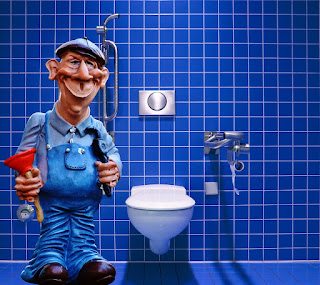Changing the hot and cold water on a single-lever mixer tap

With conventional taps, the knob to the right of the spout controls the cold water and the knob to the left controls the hot water. With a single-lever mixer, the hot and cold water are controlled with the same handle. Sliding the handle to the right controls the cold water, and sliding it to the left controls the hot water. Both types of taps, however, are fed by two supply pipes located under the washbasin. Switching from hot to cold water is a simple task that requires only basic plumbing skills. You can also adjust the mix of hot and cold water that the tap dispenses. Switching water pipes These are chrome-coloured knobs on the back wall under the sink with a thin plastic or metal tube running up to the tap. Turn each knob anticlockwise to turn off the water supply . Turn on the tap to make sure that the water supply is turned off before removing the supply lines. Loosen the supply pipes by turning the nut securing the supply pipe to the shut-off valve anticlockwise with a spa...

























